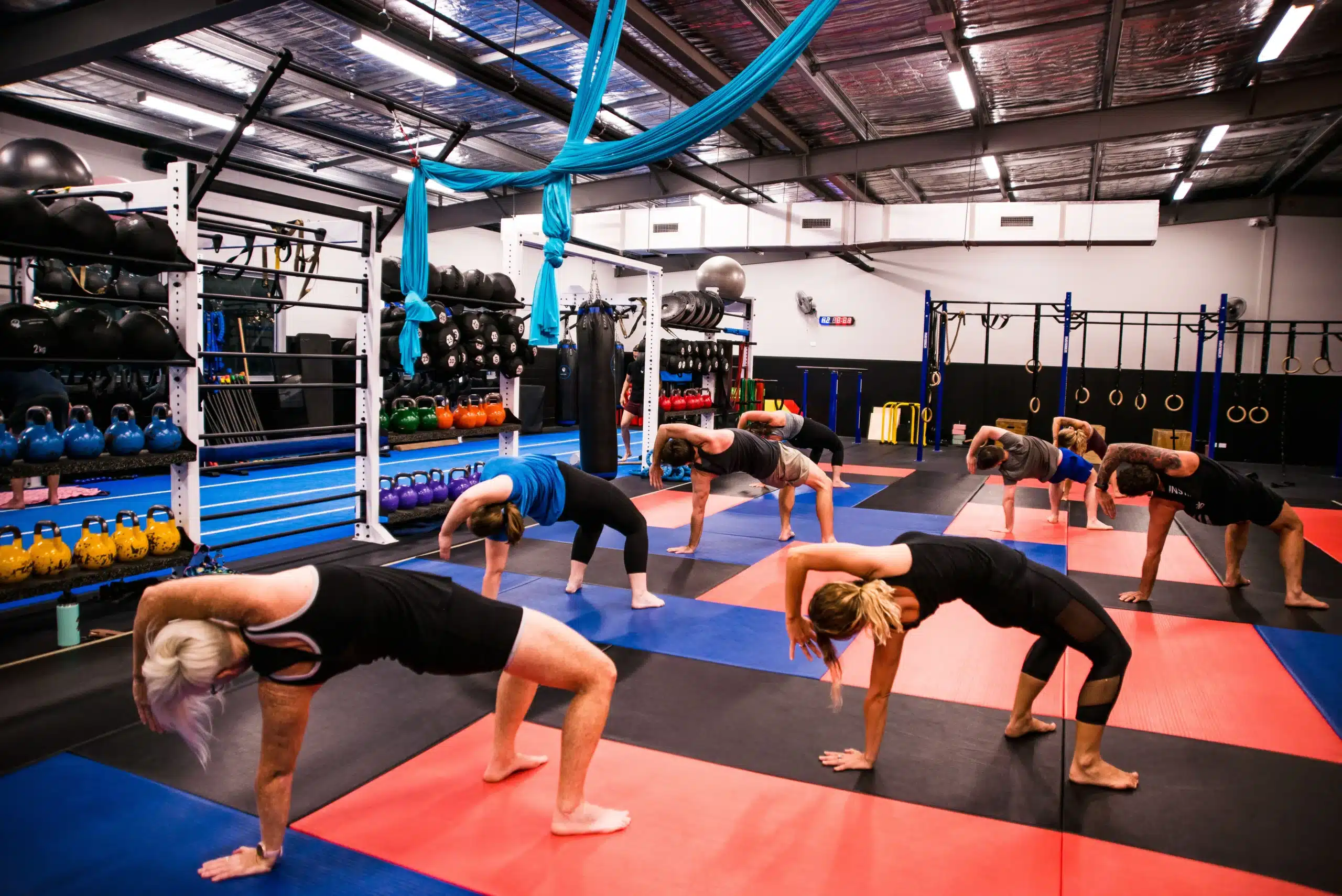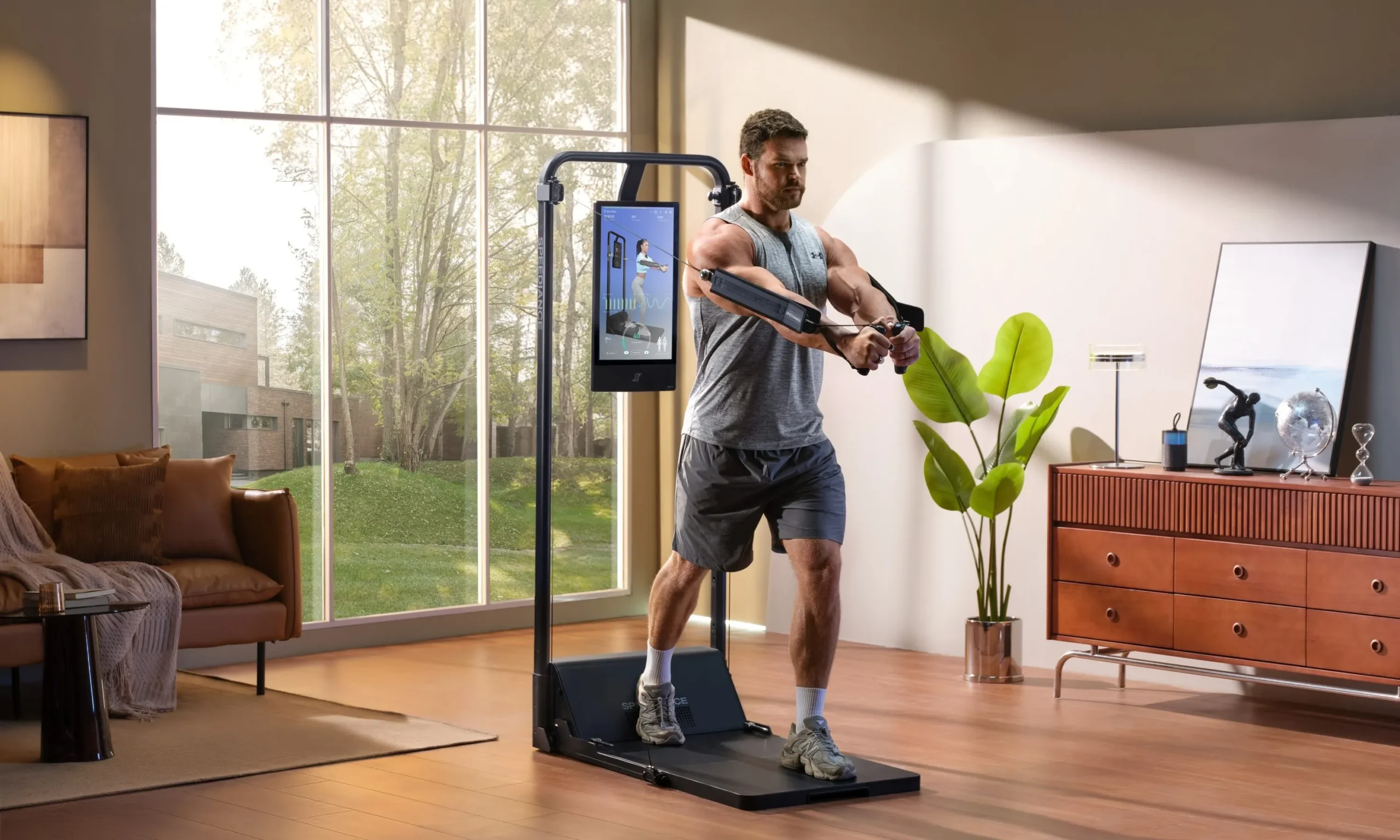Hey there, picture this: It’s a crisp Saturday morning, and I’m lacing up my sneakers for a pickup basketball game with old college buddies. Back in my early 20s, I was the guy huffing and puffing after the first sprint down the court, watching everyone else explode past me like I was stuck in slow motion. Fast-forward a decade, and after dialing in some targeted explosive power and speed workouts, I’m the one stealing the ball mid-air and dunking on friends half my age. That shift? It didn’t come from endless treadmill miles or grinding out heavy deadlifts alone. It came from blending raw strength with lightning-fast bursts—turning my body into a coiled spring ready to unleash. If you’re tired of feeling sluggish in your sport or just want that extra zip in daily life, stick with me. We’re diving deep into explosive power and speed workouts that deliver real results, backed by science and my own trial-and-error sweat sessions.
Explosive training isn’t some elite secret reserved for Olympians; it’s accessible firepower for anyone chasing better athleticism. Whether you’re a weekend warrior, a coach prepping a team, or someone eyeing that first 5K sprint finish, these workouts build the fast-twitch muscle magic that amps up your quickness and force. And yeah, there’s a light-hearted truth here: Who hasn’t tripped over their own feet trying to mimic a pro’s burst? I have—more times than I’d admit. But that’s the beauty; with smart programming, you’ll laugh less at your mishaps and celebrate more victories.
What Is Explosive Power and Why Does Speed Matter in Your Training?
Explosive power boils down to generating maximum force in the blink of an eye—think slamming a tennis serve or leaping for a rebound. It’s that sweet spot where strength meets velocity, powering everything from a soccer header to chasing down a bus. Speed weaves in as the accelerator, ensuring you don’t just lift heavy but launch it fast.
In my coaching days with high school track kids, I’d see athletes grind through squats but flop on the track because they skipped the speed component. Research echoes this: A meta-analysis of youth athletes showed plyometric power drills crush jump height gains, while pure strength edges out sprint improvements. Combine them? You get the full explosive package. For everyday folks, this means easier yard work bursts or playing tag with the kids without gasping. It’s not fluff—it’s functional fire that keeps you injury-free and fired up.
But here’s the emotional hook: Remember that time you missed a play because your legs felt like lead? Explosive training flips that script, building confidence that radiates off the field. And trust me, nothing beats the rush of surprising yourself with a personal best leap.
The Science Behind Building Explosive Strength: Force, Velocity, and Your Fast-Twitch Fibers
At its core, explosive power follows physics’ force-velocity curve: Heavy loads build brute strength, light ones crank speed, and the middle ground? That’s where power explodes. Training hits your fast-twitch fibers—the sprinters of your muscles—firing them up for quick, potent contractions.
I once worked with a client, a 40-something dad rebuilding after knee surgery, who doubted he’d ever sprint again. We leaned on post-activation potentiation (PAP), where heavy lifts prime explosive follows. Studies from Soviet-era training validate this: Alternating squats with jumps spiked power output by 20% in weeks. It’s neural wizardry—your nervous system learns to recruit more muscle units faster. Add in the stretch-shortening cycle from plyos, and you’re storing elastic energy like a rubber band snap. The result? Not just gym gains, but real-world zip that makes stairs feel like skips.
Humor me for a sec: If your muscles were a band, slow-twitch fibers are the steady drummer, but fast-twitch? They’re the wild guitarist shredding solos. Neglect them, and your workout’s a ballad. Wake ’em? Concert-level performance.
Essential Exercises for Explosive Lower Body Power: Jump, Sprint, Dominate
Lower body drives most explosive actions, from cuts in football to bounds in basketball. These moves target quads, glutes, and hammies with ballistic flair, blending plyometrics and weights for max pop.
Start simple: Box jumps build vertical leap without gear overload. In my garage setup, they’re a staple—hop up, step down, repeat. Pair with sled pushes for horizontal drive; nothing mimics game-speed resistance like dragging turf. For variety, depth jumps teach reactive bounce: Drop from a box, land, explode up. Science says horizontal plyos shine for sprint speed, so weave in bounds or A-skips.
One client story: A soccer mom in her 30s added these twice weekly and shaved seconds off her 40-yard dash—enough to keep up with her speedy teens. It’s empowering, turning “I can’t” into “Watch this.”
Box Jumps: The Vertical Launchpad for Athletic Leap
Box jumps hammer triple extension—ankles, knees, hips firing in sync—for that rocket-like takeoff. Stand tall, squat low, then drive up onto a sturdy box (start knee-high), landing soft. Explode down for the next rep.
Keep sets at 3-5 reps; fatigue kills form. Pros: Boosts jump height 10-15% in studies, no weights needed. Cons: Joint stress if you’re over 200 pounds—scale height wisely. I love ’em for warming up legs without burnout.
Sled Pushes: Raw Speed and Power Under Load
Load a sled light (10-20% bodyweight), crouch low, and drive forward in explosive shuffles. Aim 20-30 yards, rest, repeat. It’s brutal but builds acceleration like nothing else.
Athletes swear by it for football lines; I used it post-injury to rebuild without impact. Pros: Low injury risk, full-body engagement. Cons: Needs space or gym access—improvise with a backpack drag at home.
Upper Body Explosives: Slams, Presses, and Throws for Total Force
Don’t sleep on the top half—explosive upper body amps punches, blocks, and overhead slams. These drills link core to limbs, creating seamless power transfer.
Medicine ball slams are my go-to: Hoist overhead, crush down with a grunt. Or try plyo push-ups: Clap mid-air for that extra oomph. Kettlebell cleans add weight, snatching from floor to rack in one fluid pull. A study in the Journal of Strength and Conditioning found these spike power 15-20% over static presses.
Recall my basketball epiphany: Incorporating med ball throws turned my weak lobs into laser passes. It’s that “aha” moment when power feels effortless, like your arms grew springs.
Plyometric Push-Ups: Chest and Triceps with a Clap
From plank, lower controlled, then shove up hard enough to clap hands. Land soft, reset. Builds push power for sports like wrestling.
Pros: Bodyweight accessible, enhances reaction time. Cons: Wrist strain for beginners—modify on knees. I’ve seen grapplers add these and dominate takedowns faster.
Medicine Ball Slams: Full-Body Fury Release
Grip a 10-20 lb ball, swing overhead, slam ground with hips driving. Catch the bounce, repeat. It’s cathartic—stress relief bonus.
Pros: Core integrator, metabolic boost. Cons: Echoes in apartments—use a soft ball. Perfect for venting post-work frustration.
Contrast Training: The Secret Weapon for Blending Strength and Speed
Contrast training pairs heavy lifts with explosive counterparts, like squats into jumps, leveraging PAP for supercharged output. Soviet coaches pioneered it; modern studies show 5-10% power jumps in 4-6 weeks.
I program it weekly: 3 heavy reps, 1-min rest, 5 jumps. It’s efficient—45 minutes max—and addictive once you feel the surge. For a client plateaued on cleans, this broke through, adding 20 pounds to his PR. Emotional win: That fist-pump after a PR? Pure gold.
Sample Explosive Power & Speed Workout Plans: From Beginner to Beast Mode
Ready to roll? Here’s a 4-week progression, 2-3x weekly. Warm up dynamic (arm circles, leg swings), cool down stretch. Track jumps or times for motivation—seeing progress hooks you.
Beginner Plan (Weeks 1-2): Focus form, low volume. 3 sets each, 2-min rests.
| Exercise | Reps/Distance | Notes |
|---|---|---|
| Box Jumps | 5 | Knee-high box |
| Sled Push | 20 yards | Light load |
| Med Ball Slams | 8 | 10 lb ball |
| Plyo Push-Ups | 5 | Knee mod if needed |
Rest days: Light jog or yoga. I started a newbie group like this; by week 2, verticals soared 4 inches.
Intermediate Plan (Weeks 3-4): Ramp intensity. Add contrast pairs.
- Squat (heavy, 3 reps) + Jump Squats (5)
- Push Press (3 reps, 60% max) + Med Ball Chest Pass (5)
- Sprints: 4×20 yards all-out
Pros: Balanced build, sport-transferable. Cons: Needs recovery—sleep 8 hours. One athlete client used this pre-season, crediting it for MVP nods.
Advanced Beast Mode: 4-6 weeks, full contrast circuit. 4 sets, timed for speed.
Compare to steady-state cardio: Explosives torch calories post-workout (EPOC effect) but demand more recovery. Versus pure strength? More athletic carryover, less mass focus.
Pros and Cons of Explosive Workouts: Weighing the Boom and the Bang
Explosive training’s a powerhouse, but like any tool, it has edges.
Pros:
- Skyrockets athletic performance—faster sprints, higher jumps per studies.
- Boosts metabolism for fat loss without endless cardio.
- Fun factor: Who doesn’t love hurling a ball or leaping like a kid?
- Injury-proofing: Stronger tendons via eccentric loads.
Cons:
- Higher impact risk—knees hate sloppy form.
- Neural fatigue: Skip rest, and you’ll burn out quick.
- Gear-dependent sometimes (sleds, boxes)—home hacks needed.
- Not hypertrophy kings; pair with volume for size.
In my experience, the pros outweigh if you progress smart. That soccer mom? She gained confidence alongside power—no cons in sight.
Where to Get Explosive Training Gear: Home vs. Gym Essentials
Navigational nudge: For home setups, snag a plyo box from Amazon basics or med balls at Rogue Fitness. Gym rats, hit CrossFit boxes for sleds—many offer drop-ins.
Transactional tip: Best tools? VertiMax bands for resisted jumps ($200, game-changer) or budget kettlebells ($30 starters). I built mine piecemeal; start with bodyweight, upgrade as you crush goals.
People Also Ask: Real Questions from Fellow Fitness Seekers
Pulled straight from Google searches, these hit common curiosities.
What is the difference between power and explosive strength?
Power’s force times velocity—steady output like a clean. Explosive strength amps the speed burst, ideal for sprints. Both overlap, but explosives target that split-second max effort.
How often should I do explosive workouts?
Twice weekly max, with 48-hour recovery. Overdo it, and fatigue tanks gains. Beginners: Once. Pros: Integrate with strength days.
Can explosive training help with weight loss?
Absolutely—HIIT-style bursts spike EPOC, burning calories hours post. Pair with diet for 1-2 lbs weekly drop, per my clients’ logs.
Are plyometrics safe for beginners?
With form focus, yes—start low-impact like squat jumps. Consult a doc if joint issues; I eased a newbie in, avoiding tweaks.
What’s the best explosive exercise for vertical jump?
Depth jumps edge out, building reactive power. But box jumps are accessible gold—consistent 10% gains in studies.
Common Mistakes in Explosive Speed Training and How to Dodge Them
Rushing form for reps? Classic pitfall—leads to tweaks. I blew a hammy once chasing volume; lesson learned: Quality over quantity.
Skipping warm-ups: Cold muscles snap like twigs. Dynamic drills first. Neglecting recovery: Foam roll, sleep—your CNS needs it. And variety rut: Rotate exercises quarterly to avoid plateaus. Fix these, and you’ll surge ahead.
One funny fail: A client “exploded” into a jump rope tangle—humor kept us going, but proper cues prevented repeats.
Fueling Your Explosive Gains: Nutrition and Recovery for Peak Performance
Power demands fuel—carbs for quick energy, protein for repair. Pre-workout: Banana and oats. Post: Shake with 30g whey, berries. Hydrate like it’s your job; dehydration kills speed 10%.
Recovery’s queen: 7-9 hours sleep, active rest days. I swear by contrast showers—hot then cold—for inflammation zap. Supplements? Creatine (5g daily) boosts power 5-15%, per meta-analyses. Emotional tie: Proper eats turned my “hangry hangs” into energized triumphs.
Tracking Progress: Metrics That Matter Beyond the Mirror
Don’t just eyeball it—measure. Weekly vertical jump tests, 10-yard sprint times. Apps like MyJump app nail accuracy. My basketball crew tracked; seeing 2-inch gains? Motivational rocket fuel.
Compare pre/post: Baseline now, retest monthly. If stalled, tweak volume. It’s data-driven joy—turning sweat into stories.
FAQ: Your Burning Questions on Explosive Power & Speed Workouts Answered
How long until I see explosive gains?
4-6 weeks for noticeable jumps in speed/power, per research. Consistency’s key—my clients felt zippier by week 3.
Can I do these if I’m over 40?
Heck yes, scaled. Focus low-impact like trap bar jumps. A 45-year-old client hit PRs safely; age is no barrier.
Best shoes for explosive workouts?
Cushioned cross-trainers with grip—Nike Metcons rock. Avoid thin soles; protect those ankles.
Do I need a coach for Olympic lifts?
For cleans/snatches, yes—form’s tricky. Start with apps or CrossFit intros; I learned the hard way via YouTube fails.
How to combine with endurance training?
Alternate days: Explosives Mon/Wed, runs Tue/Thu. Hybrid sessions? End strength with short sprints. Balance prevents burnout.
There you have it—your blueprint to explosive power and speed that sticks. From my court-side flops to coaching triumphs, this stuff transforms not just bodies, but mindsets. Grab that box, hit play on your playlist, and launch. What’s your first move? Drop a comment; let’s chat gains. You’ve got this—now go explode.




